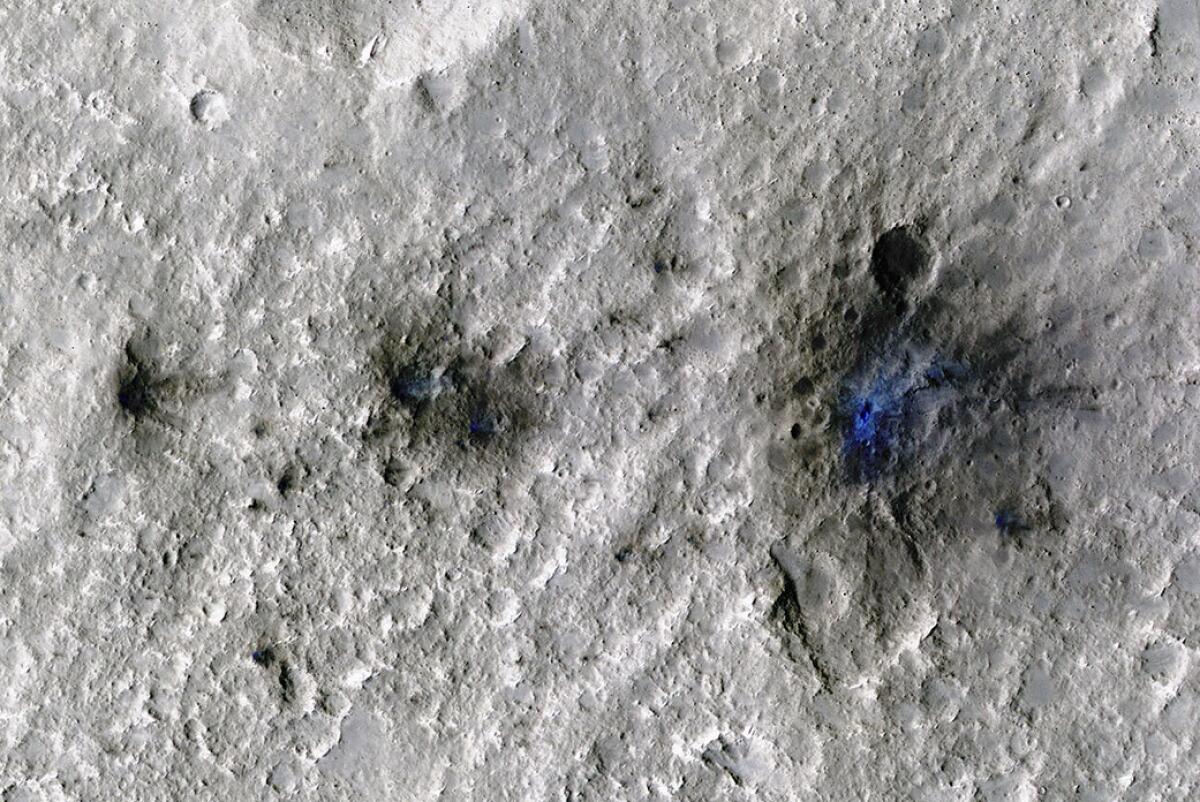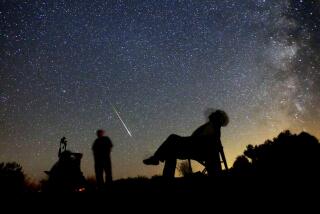NASA’s Mars InSight lander captures vibrations of strikes by 4 incoming space rocks

- Share via
CAPE CANAVERAL, Fla. — A NASA lander on Mars has captured the vibrations and sounds of four meteoroids striking the planet’s surface.
Mars InSight detected seismic and acoustic waves from a series of impacts in 2020 and 2021, scientists reported Monday in the journal Nature Geoscience. A NASA satellite orbiting the red planet confirmed the impact locations, as far as 180 miles from the lander.
Scientists are delighted by the detections — a first for another planet.
The first confirmed meteoroid exploded into at least three pieces, each leaving its own crater. An 11-second audio snippet of this strike includes three “bloops,” as NASA calls them, one of which sounds like metal flapping loudly in the wind here on Earth.
Suzanne Smrekar has been trying to take the temperature of Mars for nearly 25 years.
“After three years of InSight waiting to detect an impact, those craters looked beautiful,” study coauthor Ingrid Daubar, a planetary scientist at Brown University, said in a statement.
The InSight team expected to pick up numerous meteoroid strikes, given Mars’ proximity to the asteroid belt and the planet’s thin atmosphere, which tends to keep entering space rocks from burning up. But the lander’s French-built seismometer may have missed some impacts because of interfering noise from the Martian wind or seasonal changes in the atmosphere.
Now that scientists know what to look for, NASA says, a surge of detections may follow.
“Impacts are the clocks of the solar system,” study leader Raphael Garcia said in a statement from the Higher Institute of Aeronautics and Space in Toulouse. “We need to know the impact rate today to estimate the age of different surfaces.”
It sounds like a subway train rushing by. Or a plane flying low overhead.
The InSight mission is managed by the Jet Propulsion Laboratory in La Cañada Flintridge. Launched in 2018, the lander has already detected more than 1,300 marsquakes. The largest measured a magnitude 5 earlier this year.
By comparison, the marsquakes generated by the meteoroid impacts registered no more than a magnitude 2.






